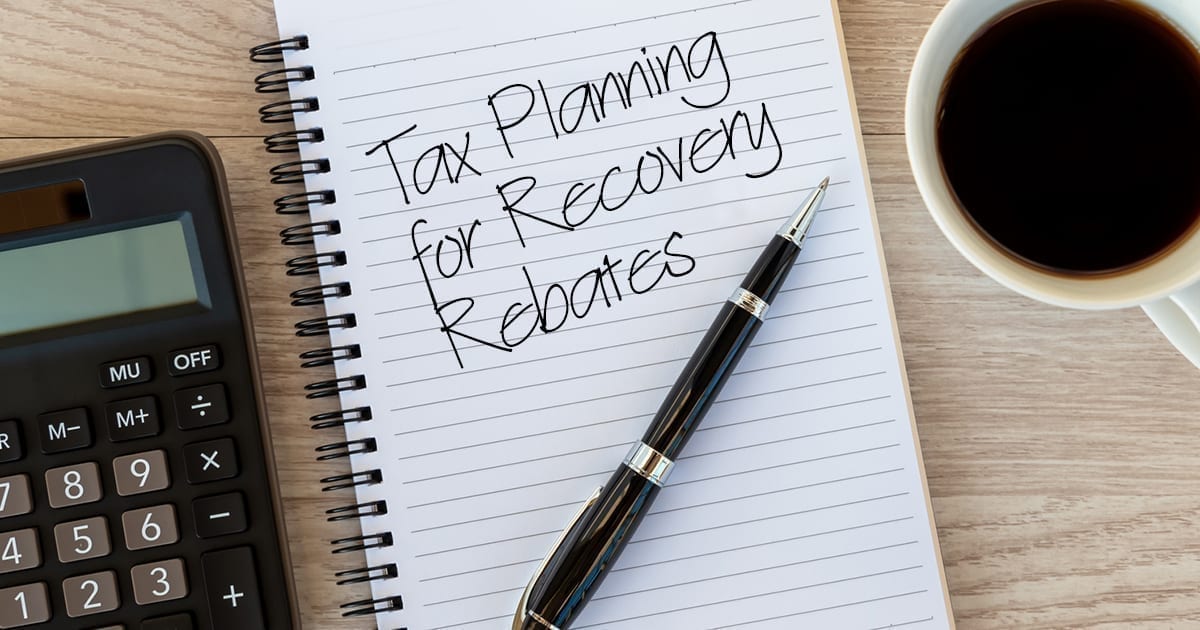Tax Planning for Recovery Rebates

Earlier this year, you may have received the CARES Act Recovery Rebate credit of $1,200 (Single), $2,400 (Married Filing Joint) plus $500 per dependent, determined by your adjusted gross income (AGI). The AGI phaseout levels start at $150,000 for joint filers, $112,500 for head of household and $75,000 for single or Married Filing Separate.
The amount you may have received is an advance of the credit to be calculated on your 2020 tax year. The government wanted to get the funds to the taxpayers early in 2020 (instead of waiting until filing in early 2021). Therefore, the recovery rebate received in 2020 was determined by either your 2018 or 2019 tax return AGI, depending on when your 2019 return was filed.
Changes in the taxpayer’s 2020 AGI could make a difference in determining whether the taxpayer will ultimately qualify for the recovery rebate credit. While the wording in the CARES Act is somewhat ambiguous, a Congressional Research Service report clarifies the CARES Act does not require taxpayers to repay any advanced refund payments if their 2020 AGI exceeds the income limits for the refund credit as calculated on a 2020 return.
For example, if a married couple with two children receive the full advanced refund of $3,400 based on 2019’s AGI, but their 2020 AGI increases to over the phaseout limits, the couple may keep the entire $3,400 without increasing their 2020 tax liability.
On the other hand, if the advanced credit received in 2020 was zero ($0.00) or lower than the actual credit based on the taxpayers 2020 AGI, the taxpayer may be able to claim an increased refund on their 2020 income tax return.
For example, if the taxpayer’s AGI in 2018 or 2019 was in excess of the AGI phaseout levels but their 2020 AGI is below the phaseout levels, the taxpayers could receive an increased refund or lowering of their tax liability on their 2020 return.
Furthermore, if children are born or adopted in 2020, taxpayers may be eligible for an additional $500 for each new child, again if their 2020 AGI is below the phaseout levels.
Currently this Recovery Rebate credit is valid only for 2020, therefore, taxpayers have more of an incentive to push income into subsequent years to lower their AGI. Some of these ideas include:
- increasing contributions to your employer pre-tax 401k plan and/or contributing to your SEP IRA as a sole-proprietor
- returning your 2020 IRA RMD distribution back to your IRA by 8/31/2020
- filing Married Filing Joint vs. Married Filing Separate (this is something we will look at when preparing the return in 2021)
If you have further questions as to how the Recovery Rebate may impact your 2020 tax return or would like to do some tax planning, please reach out to your tax professional.
